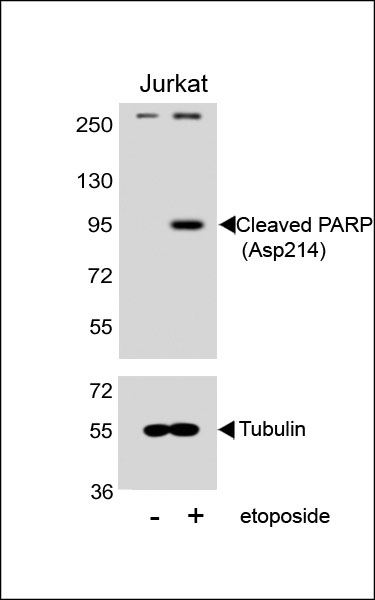Poly-ADP-ribosyltransferase that mediates poly-ADP- ribosylation of proteins and plays a key role in DNA repair (PubMed:
17177976, PubMed:
18172500, PubMed:
19344625, PubMed:
19661379, PubMed:
23230272, PubMed:
25043379, PubMed:
33186521, PubMed:
32028527, PubMed:
26344098). Mediates glutamate, aspartate, serine or tyrosine ADP-ribosylation of proteins: the ADP-D-ribosyl group of NAD(+) is transferred to the acceptor carboxyl group of target residues and further ADP-ribosyl groups are transferred to the 2'-position of the terminal adenosine moiety, building up a polymer with an average chain length of 20-30 units (PubMed:
7852410, PubMed:
9315851, PubMed:
19764761, PubMed:
25043379, PubMed:
28190768, PubMed:
29954836). Serine ADP- ribosylation of proteins constitutes the primary form of ADP- ribosylation of proteins in response to DNA damage (PubMed:
33186521). Mainly mediates glutamate and aspartate ADP-ribosylation of target proteins in absence of HPF1 (PubMed:
19764761, PubMed:
25043379). Following interaction with HPF1, catalyzes serine ADP-ribosylation of target proteins; HPF1 conferring serine specificity by completing the PARP1 active site (PubMed:
28190768, PubMed:
29954836, PubMed:
33186521, PubMed:
32028527). Also catalyzes tyrosine ADP-ribosylation of target proteins following interaction with HPF1 (PubMed:
30257210, PubMed:
29954836). PARP1 initiates the repair of DNA breaks: recognizes and binds DNA breaks within chromatin and recruits HPF1, licensing serine ADP-ribosylation of target proteins, such as histones, thereby promoting decompaction of chromatin and the recruitment of repair factors leading to the reparation of DNA strand breaks (PubMed:
17177976, PubMed:
18172500, PubMed:
19344625, PubMed:
19661379, PubMed:
23230272, PubMed:
27067600). In addition to base excision repair (BER) pathway, also involved in double-strand breaks (DSBs) repair: together with TIMELESS, accumulates at DNA damage sites and promotes homologous recombination repair by mediating poly-ADP-ribosylation (PubMed:
26344098, PubMed:
30356214). Mediates the poly(ADP-ribosyl)ation of a number of proteins, including itself, APLF and CHFR (PubMed:
17396150, PubMed:
19764761). In addition to proteins, also able to ADP-ribosylate DNA: catalyzes ADP-ribosylation of DNA strand break termini containing terminal phosphates and a 2'-OH group in single- and double-stranded DNA, respectively (PubMed:
27471034). Required for PARP9 and DTX3L recruitment to DNA damage sites (PubMed:
23230272). PARP1- dependent PARP9-DTX3L-mediated ubiquitination promotes the rapid and specific recruitment of 53BP1/TP53BP1, UIMC1/RAP80, and BRCA1 to DNA damage sites (PubMed:
23230272). Acts as a regulator of transcription: positively regulates the transcription of MTUS1 and negatively regulates the transcription of MTUS2/TIP150 (PubMed:
19344625). Plays a role in the positive regulation of IFNG transcription in T-helper 1 cells as part of an IFNG promoter-binding complex with TXK and EEF1A1 (PubMed:
17177976). Involved in the synthesis of ATP in the nucleus, together with NMNAT1, PARG and NUDT5 (PubMed:
27257257). Nuclear ATP generation is required for extensive chromatin remodeling events that are energy-consuming (PubMed:
27257257).

